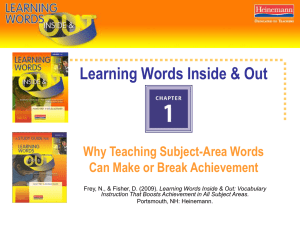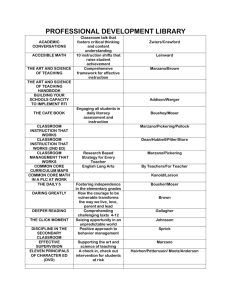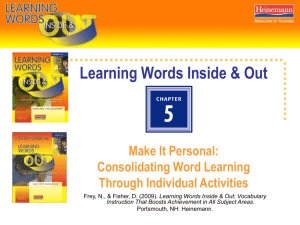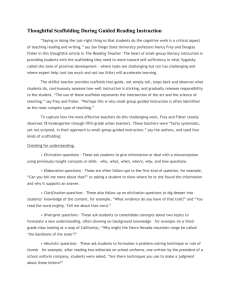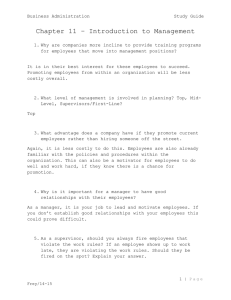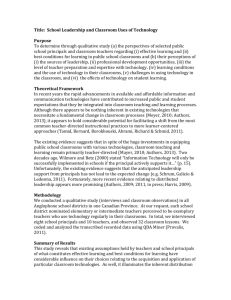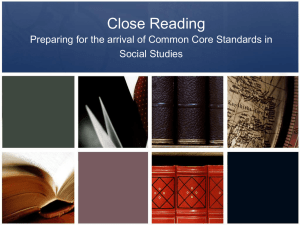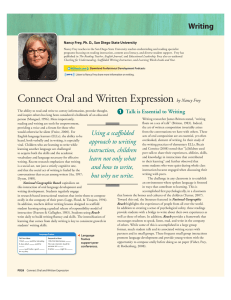Gradual Release of Responsibility in Classrooms
advertisement
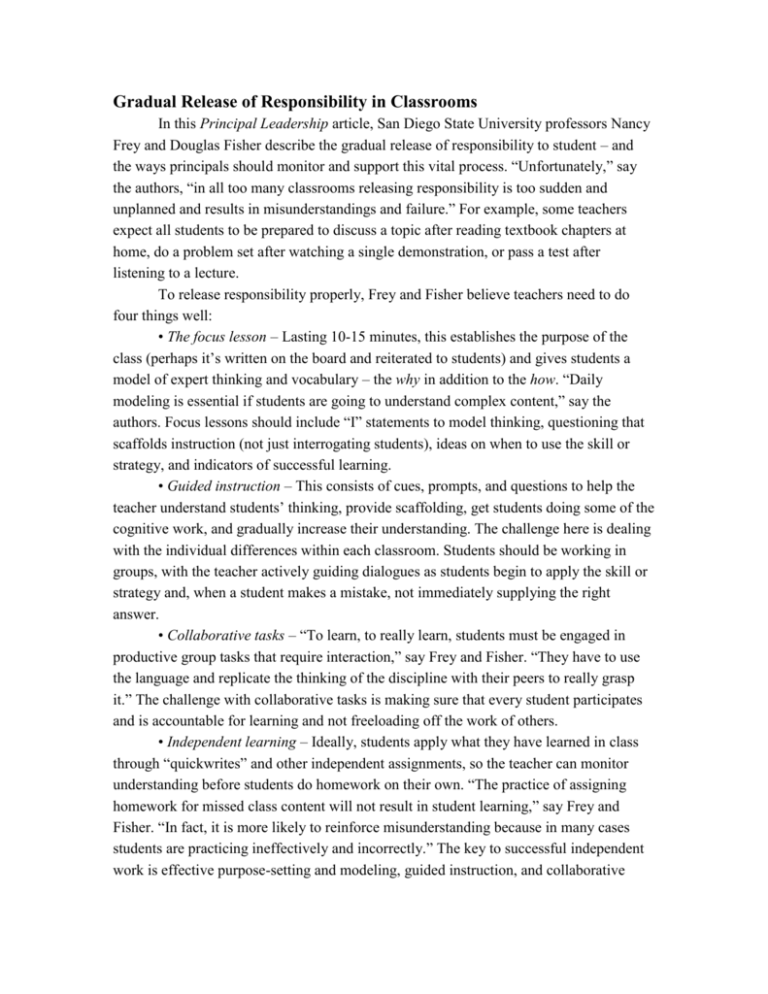
Gradual Release of Responsibility in Classrooms In this Principal Leadership article, San Diego State University professors Nancy Frey and Douglas Fisher describe the gradual release of responsibility to student – and the ways principals should monitor and support this vital process. “Unfortunately,” say the authors, “in all too many classrooms releasing responsibility is too sudden and unplanned and results in misunderstandings and failure.” For example, some teachers expect all students to be prepared to discuss a topic after reading textbook chapters at home, do a problem set after watching a single demonstration, or pass a test after listening to a lecture. To release responsibility properly, Frey and Fisher believe teachers need to do four things well: • The focus lesson – Lasting 10-15 minutes, this establishes the purpose of the class (perhaps it’s written on the board and reiterated to students) and gives students a model of expert thinking and vocabulary – the why in addition to the how. “Daily modeling is essential if students are going to understand complex content,” say the authors. Focus lessons should include “I” statements to model thinking, questioning that scaffolds instruction (not just interrogating students), ideas on when to use the skill or strategy, and indicators of successful learning. • Guided instruction – This consists of cues, prompts, and questions to help the teacher understand students’ thinking, provide scaffolding, get students doing some of the cognitive work, and gradually increase their understanding. The challenge here is dealing with the individual differences within each classroom. Students should be working in groups, with the teacher actively guiding dialogues as students begin to apply the skill or strategy and, when a student makes a mistake, not immediately supplying the right answer. • Collaborative tasks – “To learn, to really learn, students must be engaged in productive group tasks that require interaction,” say Frey and Fisher. “They have to use the language and replicate the thinking of the discipline with their peers to really grasp it.” The challenge with collaborative tasks is making sure that every student participates and is accountable for learning and not freeloading off the work of others. • Independent learning – Ideally, students apply what they have learned in class through “quickwrites” and other independent assignments, so the teacher can monitor understanding before students do homework on their own. “The practice of assigning homework for missed class content will not result in student learning,” say Frey and Fisher. “In fact, it is more likely to reinforce misunderstanding because in many cases students are practicing ineffectively and incorrectly.” The key to successful independent work is effective purpose-setting and modeling, guided instruction, and collaborative tasks, as well as the teacher conferencing with individual students about how their work is going. Principals should look for these four components in classrooms, say the authors, to make sure that students are being “apprenticed” in the ideas and language of the discipline. And they should coach teachers in these ways: • Clarity on learning goals – If teachers don’t agree with the principal on what students are supposed to be learning, the principal’s feedback will be worthless. The ideal situation is when teams of teachers collaboratively agree on learning goals that are aligned with standards. • Objective feedback – A principal’s observations are most helpful when they deal in observable facts – for example, students sitting passively at their desks listening to the teacher for an extended period of time. • Looking forward – With these two in place, the principal and teacher can talk about what’s next or what if, thinking collaboratively about how to improve instruction and learning. “Principals should encourage teachers to try things out, to experiment, and to think deeply about what works and what doesn’t work,” say Frey and Fisher. “Releasing responsibility to students is not easy,” conclude the authors. “Finding the time to spend in classrooms is difficult. So is having honest conversations with teachers about instruction, especially when students appear engaged and the teacher seems to have things under control. But the high expectations that educators and the community have for students will not be realized unless every instructional minute is purposeful and designed to increase student responsibility.” “The Release of Learning” by Nancy Frey and Douglas Fisher in Principal Leadership

